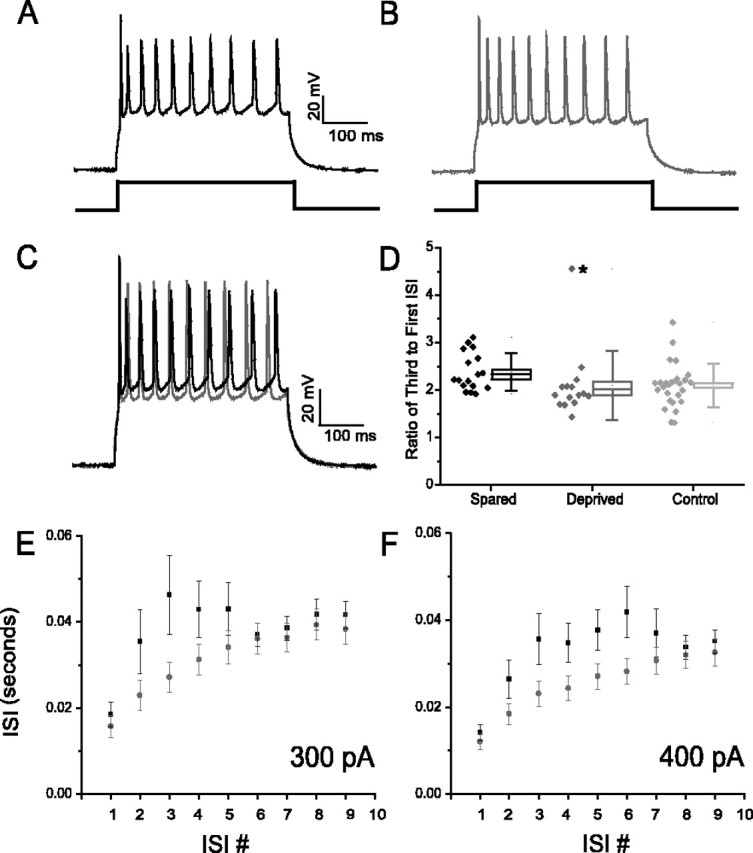Figure 8.

More active neurons show increased spike accommodation compared with sensory-deprived or control cells. A, A spike train (10 spikes) elicited by delivering a 400 msec current pulse from a sensory-spared barrel (fosGFP+). B, The same as A but from a neuron (fosGFP+) in an adjacent deprived cortical area. C, Overlay of traces from A and B show that spared barrel neurons show a shorter ISI between the first and second spike and a longer ISI for later spikes in the train. D, Calculation of the ratio of third ISI to first ISI for cells in each condition. Box edges represent SE, and error bars are SD (spared, n = 17; deprived, n = 15; control, n = 27). For spared versus control neurons, p < 0.17; without the outlier point for deprived neurons (asterisk), p < 0.00078. E, ISI for spared (black squares) or deprived (red circles) barrel neurons at a single current pulse amplitude. Increased accommodation is seen for the first few spikes in the train in spared versus deprived barrel neurons. Increased accommodation is seen for the first few spikes in the train in spared versus deprived barrel neurons. F, The same as in E but for a larger current pulse amplitude. With larger current pulse amplitudes, note that the difference in ISI is greater at each specific ISI. p values for spared and deprived ≥0.1 at ISIs 3, 4, and 5 for 300 pA and ISIs 3, 4, 5, and 6 for 400 pA graph.
